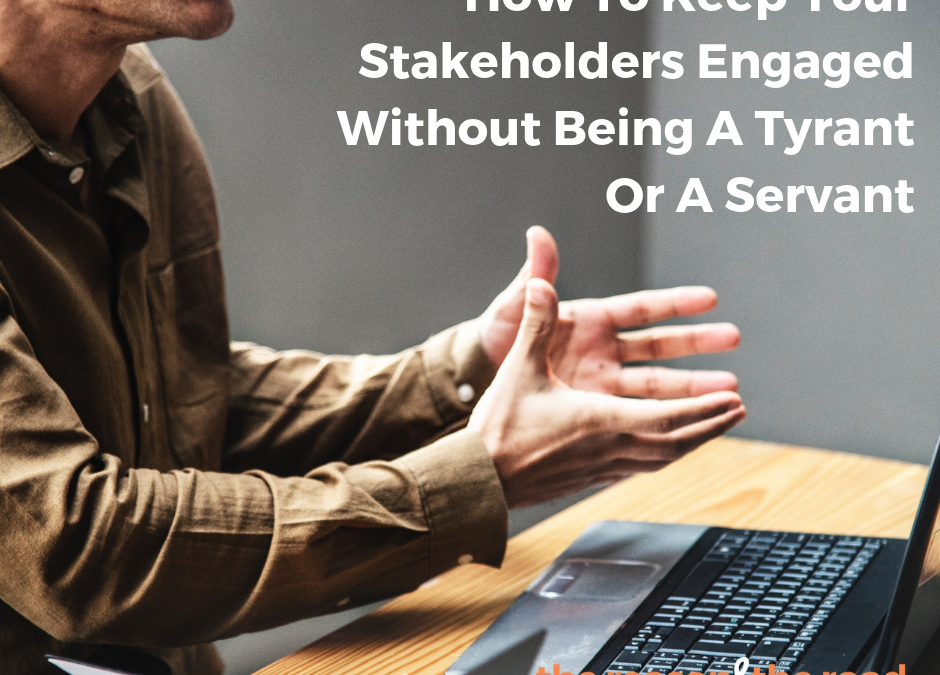
How To Find Your Purpose & What It Means For Your Career
December 17, 2018
Effective Working Relationships with Low EQ Bosses
February 4, 2019I’ve been working with a client in the media business and he’s got a problem with managing stakeholders.
What he’s finding is that his stakeholders, some of them he’s got good relationships with, and some of them he’s got really poor relationships with. And that his big problem. Think about the stakeholders around you, the people that you need to build relationships with to get your projects delivered, to get tasks done and to deliver results.
I’m going to share a framework with you that enables you in 30 minutes a quarter to be able to first establish and maintain a really effective working relationship.
Managing stakeholders, If you get this right, it’s like a lubricant or an accelerator for getting results, because relationships are how business is done, right? And how work gets done. If your relationship’s poor, they’re going to block everything that you want. If your relationship is good, they’re going to say more likely to say yes to your request for information and to get stuff done. I actually said to the client:
“Okay, what’s our outcome that we’re after? Our outcome is that we don’t actually have every relationship being amazing, but at least we want to leverage the good ones, and we want to bring the ones that are poor up to a level of normality.”
The first thing that we did was we said, “All right, we don’t want to take too much of their time,” because these are busy people and, for you, most of your stakeholders are going to be the directors or the owners of your business and usually, they’re busy.
So we said, “Okay, no more. We’re going to ask them for 30 minutes a quarter.” And what we did was we developed two things.
- We firstly developed a framework for that meeting
- We developed a communication to request that meeting from them to actually justify why they want to attend it
What I’m going to take you through today is actually the framework for the meeting and talk about some of the value that they’re going to get from it so that you can build the communication for yourself.
Here’s the thing, too often when we go to stakeholders we’re either a servant, which is that we put ourselves lower, or we’re a tyrant, which is that we tell them what to do. And either of those, in the long term, will not get going to get you what you want.
What we want to do is we want to make 10 minutes of this conversation about them. We want to understand their needs, what’s important to them and what’s going on in their business. Now, if you’re internal, that’s a really important thing for you to do, to understand,
“Okay, what are really important things that I need to work with, that I need to understand about the way around what’s going on for them?”
It’s all about them first, not you, all right? That’s one of the principles. And then the second part of that is let’s tell them about some of the things that are going on for us.
Some of the important projects, some of the things that they need to know to avoid doing, and maybe some of the things that you need their input on to get your projects done.
So 10 minutes for them, 10 minutes for you, and then 10 minutes mutually planning the quarter ahead. This is when things are going to happen. This is when projects are going to impact you, and this is the input I will need.
And, if you want to, you could literally plan that out on the calendar. But again, these guys are high-level people, you don’t want to get too detailed, but you want to have at least a plan of,
“This week is going to happen there, this week is going to happen there and this is going to happen there.”
In summary, we don’t want to be a tyrant when we are managing stakeholders, come in and tell them what they need to do, especially if you are a support function or you’re one of the other functions in a leadership team. If you manage stakeholders this way, quickly you’ll get a brand of being a tell guy or girl.
But you also don’t want to be a servant, which has have the others to do that as well. You need a regular rhythm to be able to have a conversation with them that creates a relationship of equality. I recommend 30 minutes a quarter:
- 10 minutes for them
- 10 minutes for you,
- and a 10-minute plan about what’s going to happen ahead
I just want for you to think about, if you’re gonna implement this in your business, and to improve the relationships with your stakeholders, what would be the main messages you would use to sell a conversation like this, and what would it take for you to go ahead and implement this right now?
I hope this has been really useful for you.
Talk to you next time on The Reason & The Road.




